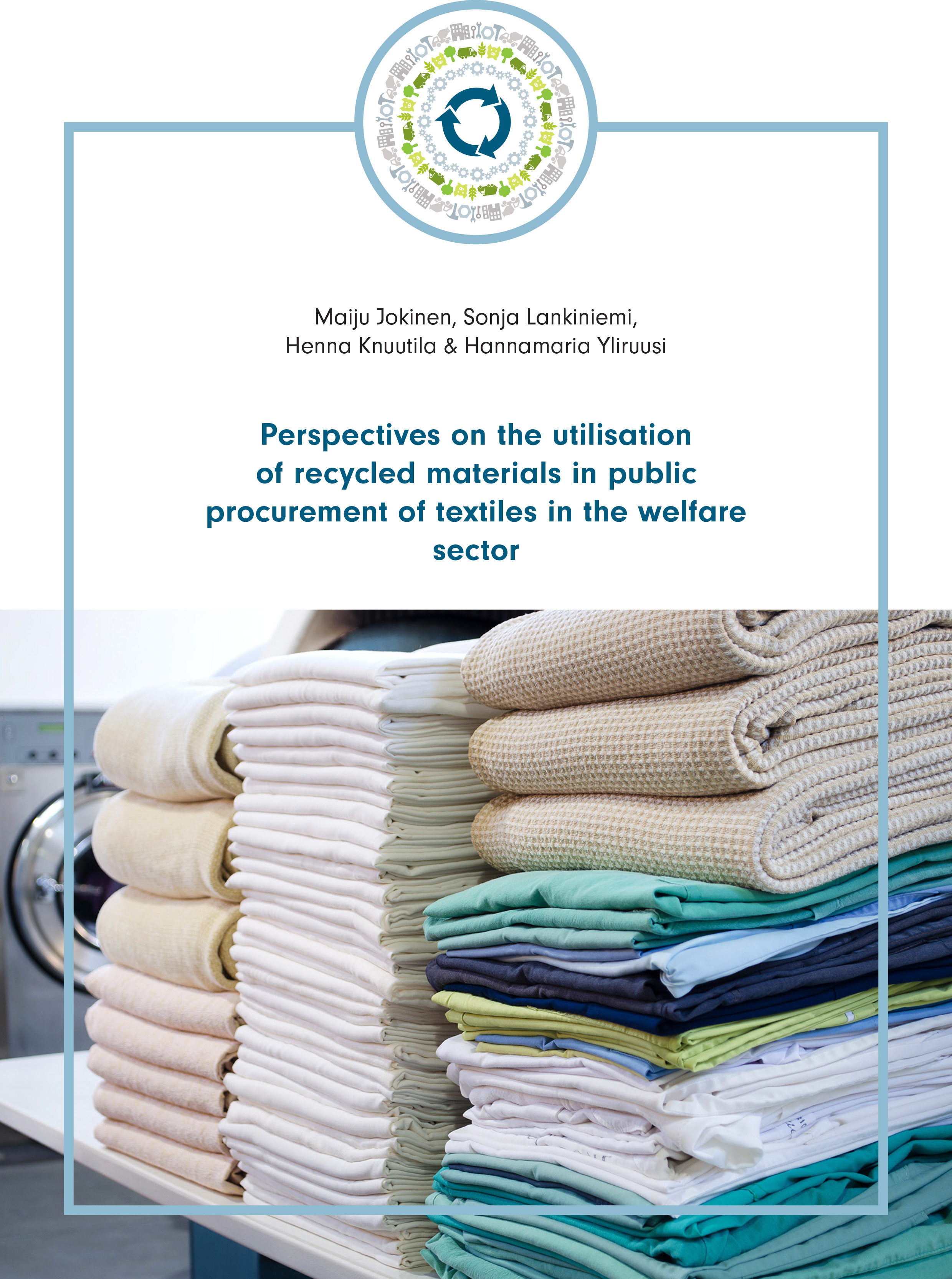
Perspectives on the utilisation of recycled materials in public procurement of textiles in the welfare sector
Tekijä(t): Jokinen, Maiju; Lankiniemi, Sonja; Knuutila, Henna & Yliruusi, Hannamaria
ISBN: 978-952-216-876-4
Reports from Turku University of Applied Sciences 301
33 s., 2024
Production in the textile industry has increased significantly during this millennium. The majority of textile industry production ends up in incineration after use. Finland has woken up to the problems of the textile industry. There is a desire to reduce the need for virgin materials imported from far away and to find other solutions for textile burning.
This publication was made as part of the Circwaste – Towards a circular economy project. This section explains how to increase the number of products containing recycled fibre in public procurement and, on the other hand, what challenges or opportunities public procurement entities and companies face in developing a circular economy for textiles through recycled textiles.
The publication focuses on textile procurement in the wellbeing sector, as its procurement volumes are large. An ecosystem is developing and recognisable in the sector, aiming to utilise recycled fibre made from end-of-life textiles in textile products. The procurement units of the wellbeing services counties are, for example, hospitals, service units for the elderly, disability service units and home care units. These organisations are public procurement units and consume a significant amount of different textiles, such as patient clothing, bed linen, separate cleaning textiles and workwear and protective clothing.
The results compiled in this publication are based on an extensive literature review conducted during 2022–2023, expert interviews and the results of organised market dialogue events and workshops.
(pdf file, 27,27 Mt)
The publication can be downloaded free of charge. The publication is subject to copyright regulations. It can be read and printed for personal use. Use for commercial purposes is prohibited.
This publication was made as part of the Circwaste – Towards a circular economy project. This section explains how to increase the number of products containing recycled fibre in public procurement and, on the other hand, what challenges or opportunities public procurement entities and companies face in developing a circular economy for textiles through recycled textiles.
The publication focuses on textile procurement in the wellbeing sector, as its procurement volumes are large. An ecosystem is developing and recognisable in the sector, aiming to utilise recycled fibre made from end-of-life textiles in textile products. The procurement units of the wellbeing services counties are, for example, hospitals, service units for the elderly, disability service units and home care units. These organisations are public procurement units and consume a significant amount of different textiles, such as patient clothing, bed linen, separate cleaning textiles and workwear and protective clothing.
The results compiled in this publication are based on an extensive literature review conducted during 2022–2023, expert interviews and the results of organised market dialogue events and workshops.
(pdf file, 27,27 Mt)
The publication can be downloaded free of charge. The publication is subject to copyright regulations. It can be read and printed for personal use. Use for commercial purposes is prohibited.